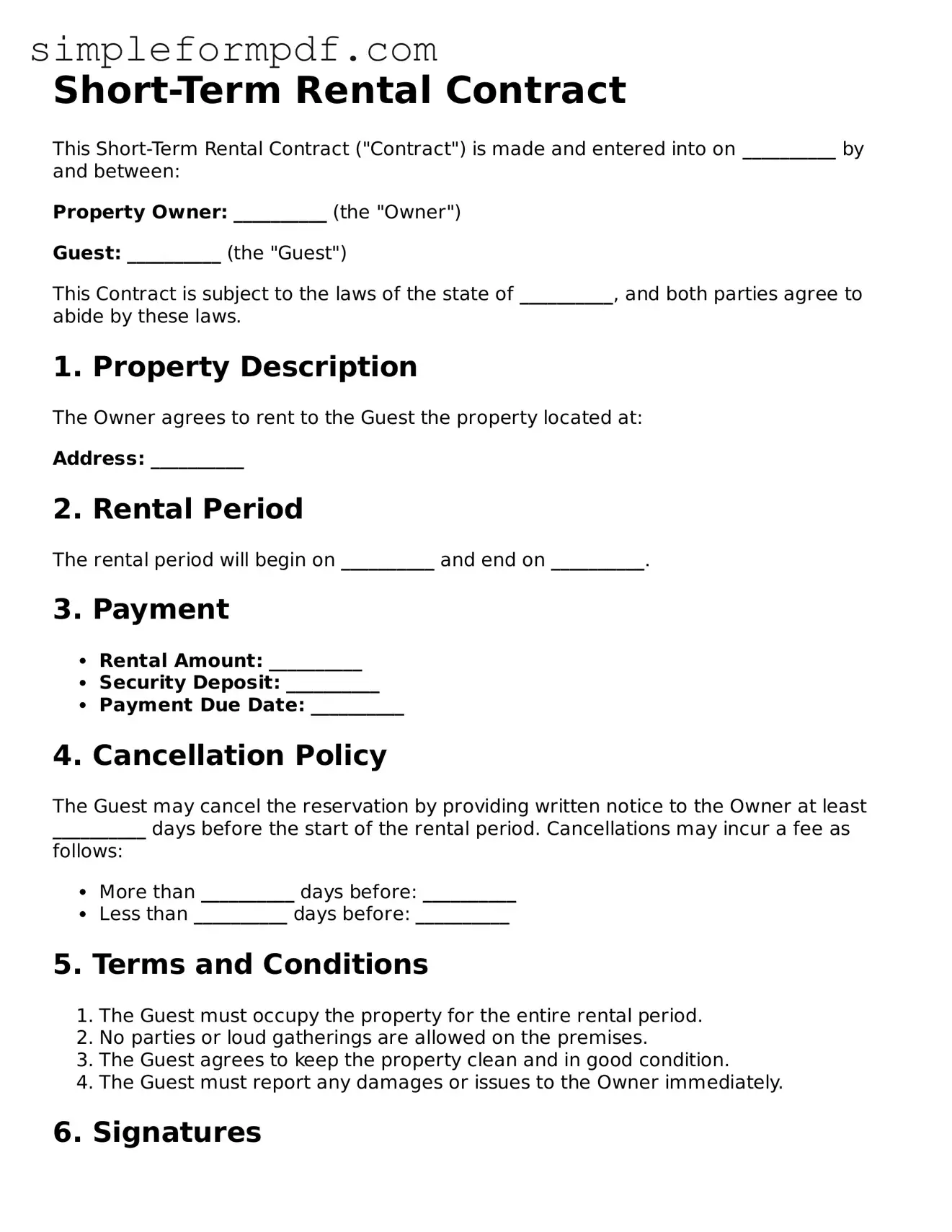Short-Term Rental Contract
This Short-Term Rental Contract ("Contract") is made and entered into on __________ by and between:
Property Owner: __________ (the "Owner")
Guest: __________ (the "Guest")
This Contract is subject to the laws of the state of __________, and both parties agree to abide by these laws.
1. Property Description
The Owner agrees to rent to the Guest the property located at:
Address: __________
2. Rental Period
The rental period will begin on __________ and end on __________.
3. Payment
- Rental Amount: __________
- Security Deposit: __________
- Payment Due Date: __________
4. Cancellation Policy
The Guest may cancel the reservation by providing written notice to the Owner at least __________ days before the start of the rental period. Cancellations may incur a fee as follows:
- More than __________ days before: __________
- Less than __________ days before: __________
5. Terms and Conditions
- The Guest must occupy the property for the entire rental period.
- No parties or loud gatherings are allowed on the premises.
- The Guest agrees to keep the property clean and in good condition.
- The Guest must report any damages or issues to the Owner immediately.
6. Signatures
By signing below, both parties agree to the terms of this Short-Term Rental Contract.
Owner's Signature: ________________________ Date: ___________
Guest's Signature: ________________________ Date: ___________
